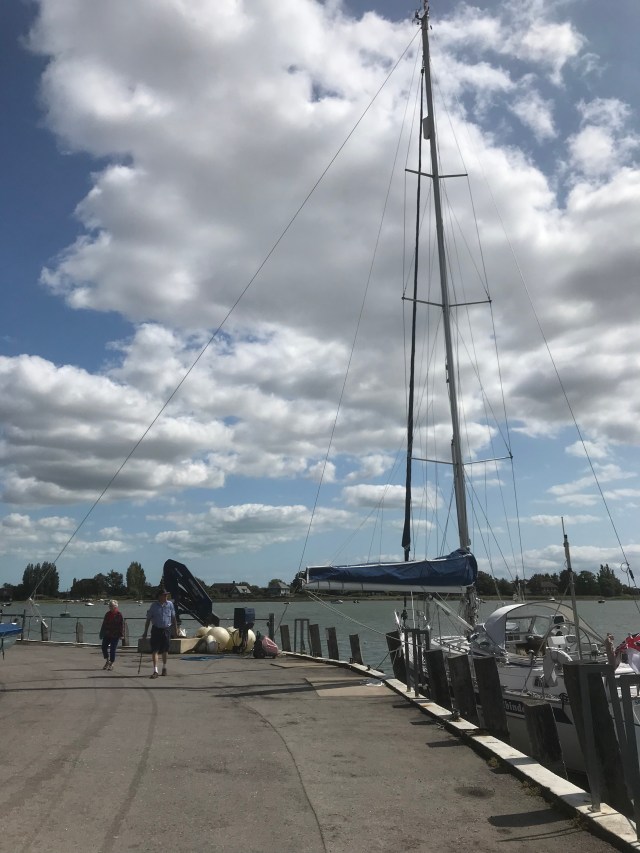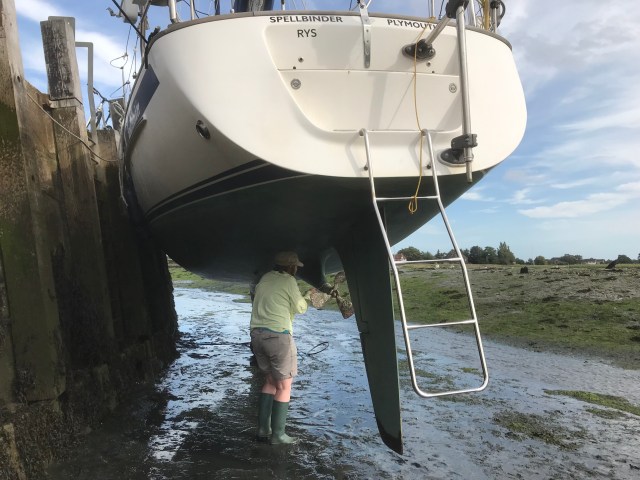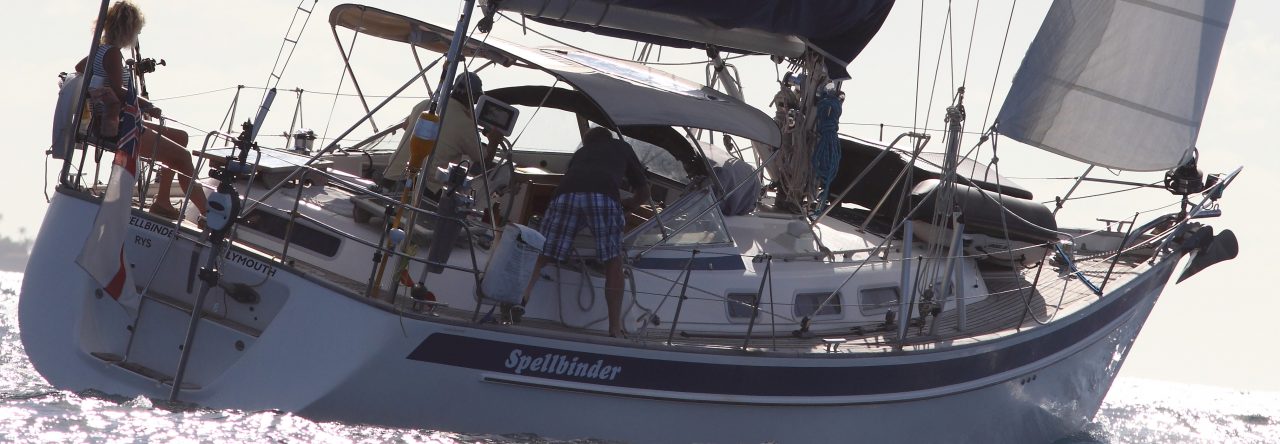After a family holiday and some home time, a few days ago I returned to Spellbinder to undertake some maintenance jobs. After her 10,000 mile cruise she is in remarkably good condition – a tribute to her build quality but also to an ongoing programme of minor maintenance. If things break I try and fix them there and then, and when you are on board for lengthy periods this gives you ample time to undertake what is required.
One thing that did need doing was an inspection of the hull and stern gear, a wash off of the Coppercoat antifouling and a change of the prop anodes. This can all be done easily and expensively by lifting out at a boatyard, but I have always liked to dry out against piles or a wall: it is cheap, fun and a social activity. Some followers of the blog will remember doing this with me on my previous yacht Kianga at Hardway.
I had always wanted to dry out against the quayside at Bosham harbour, and took Spellbinder there having booked in with the harbourmaster.

Passing through the submarine barrier outside Portsmouth. It’s good to be in home waters again, although I’m reacquainting myself with things like tides and cooler, stronger wind and rain…
Bosham quay dries at 2m above chart datum, so with my 2m draft I needed a spring tide well in excess of 4m. Happily high water springs at Bosham is around midday, so by tea-time you can be pressure washing away happily and in the nearby pub by apéro time. This is my kind of schedule. You can then head away at midnight on the next high water, or the following midday.
We came in as planned in slightly breezy conditions and settled in with a couple of fender boards to spread the weight of the yacht against the mooring piles. The tricky part is to ensure that when you ground you lean into, and not away from the wall. This is where the masthead spinnaker halyard comes into its own. Led across to a nearby secure point, the leverage is sufficient to ensure that the yacht settles nicely. I also move the boom across to add weight on the appropriate side. Luckily the road at Bosham cuts off at high water, so there is no through traffic. You also need to be careful with your lines, making them long to allow for the drop.

Halyard and boom deployed
There is a good 2 hour high water stand at Bosham, but then the ebb starts in earnest.

Spellbinder settling nicely on her keel
Once she was properly grounded, it wasn’t long until the pressure washer was out. The base of the quay is concrete so not too muddy. There was some weed around the waterline, but otherwise it was just slime and the odd barnacle. It didn’t take long to wash her down and we then changed the two anodes which protect the prop.


Job done
By 6.30 pm we had changed out of our waders and wellies, had a shower and were having a drink with friends Ed and Jeanna, followed by dinner in the Anchor Bleu.

I came off the wall the next day, which did mean a slightly interrupted night as I went through the halyard thing again at 3am! But it was hugely satisfying, and I noticed a significant increase in speed as I motored back in gusty conditions. Spellbinder scrubs up well.

Great work on balancing spellbinder on her keel! What a journey she had had over the last 10 months or so.
LikeLiked by 1 person
Great to hear from you Charles. You get a special mention in my previous post too – thread tension and free diving…
LikeLike
Great Nick but I did like the snorkel and brush in Bermuda
LikeLiked by 1 person